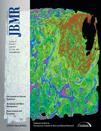Macdonald, Heather M.
Person Preferred Name
Heather M. Macdonald
Related Works
Content type
Digital Document
Abstract
We revisit Stanley Garn's theory related to sex differences in endocortical and periosteal apposition during adolescence using a 12‐year mixed longitudinal study design. We used peripheral quantitative computed tomography to examine bone parameters in 230 participants (110 boys, 120 girls; aged 11.0 years at baseline). We assessed total (Tt.Ar, mm2), cortical (Ct.Ar, mm2), and medullary canal area (Me.Ar, mm2), Ct.Ar/Tt.Ar, cortical bone mineral density (Ct.BMD, mg/cm3), and polar strength‐strain index (SSIp, mm3) at the tibial midshaft (50% site). We used annual measures of height and chronological age to identify age at peak height velocity (APHV) for each participant. We compared annual accrual rates of bone parameters between boys and girls, aligned on APHV using a linear mixed effects model. At APHV, boys demonstrated greater Tt.Ar (ratio = 1.27; 95% confidence interval [CI] 1.21, 1.32), Ct.Ar (1.24 [1.18, 1.30]), Me.Ar (1.31 [1.22, 1.40]), and SSIp (1.36 [1.28, 1.45]) and less Ct.Ar/Tt.Ar (0.98 [0.96, 1.00]) and Ct.BMD (0.97 [0.96, 0.97]) compared with girls. Boys and girls demonstrated periosteal bone formation and net bone loss at the endocortical surface. Compared with girls, boys demonstrated greater annual accrual rates pre‐APHV for Tt.Ar (1.18 [1.02, 1.34]) and Me.Ar (1.34 [1.11, 1.57]), lower annual accrual rates pre‐APHV for Ct.Ar/Tt.Ar (0.56 [0.29, 0.83]) and Ct.BMD (–0.07 [–0.17, 0.04]), and similar annual accrual rates pre‐APHV for Ct.Ar (1.10 [0.94, 1.26]) and SSIp (1.14 [0.98, 1.30]). Post‐APHV, boys demonstrated similar annual accrual rates for Ct.Ar/Tt.Ar (1.01 [0.71, 1.31]) and greater annual accrual rates for all other bone parameters compared with girls (ratio = 1.23 to 2.63; 95% CI 1.11 to 3.45). Our findings support those of Garn and others of accelerated periosteal apposition during adolescence, more evident in boys than girls. However, our findings challenge the notion of greater endocortical apposition in girls, suggesting instead that girls experience diminished endocortical resorption compared with boys.
Origin Information
Content type
Digital Document
Abstract
The aim of this study was to determine the sex‐ and maturity‐related differences in bone microstructure and estimated bone strength at the distal radius and distal tibia in children and adolescents. We used high‐resolution pQCT to measure standard morphological parameters in addition to cortical porosity (Ct.Po) and estimated bone strength by finite element analysis. Participants ranged in age from 9 to 22 years (n = 212 girls and n = 186 boys) who were scanned annually for either one (11%) or two (89%) years at the radius and for one (15%), two (39%), or three (46%) years at the tibia. Participants were grouped by the method of Tanner into prepubertal, early pubertal, peripubertal, and postpubertal groups. At the radius, peri‐ and postpubertal girls had higher cortical density (Ct.BMD; 9.4% and 7.4%, respectively) and lower Ct.Po (–118% and–56%, respectively) compared with peri‐ and postpubertal boys (all p < 0.001). Peri‐ and postpubertal boys had higher trabecular bone volume ratios (p < 0.001) and larger cortical cross‐sectional areas (p < 0.05, p < 0.001) when compared with girls. Based upon the load‐to‐strength ratio (failure load/estimated fall force), boys had lower risk of fracture than girls at every stage except during early puberty. Trends at the tibia were similar to the radius with differences between boys and girls in Ct.Po (p < 0.01) and failure load (p < 0.01) at early puberty. Across pubertal groups, within sex, the most mature girls and boys had higher Ct.BMD and lower Ct.Po than their less mature peers (prepuberty) at both the radius and tibia. Girls in early, peri‐, and postpubertal groups and boys in peri‐ and postpubertal groups had higher estimates of bone strength compared with their same‐sex prepubertal peers (p < 0.001). These results provide insight into the sex‐ and maturity‐related differences in bone microstructure and estimated bone strength.
Origin Information


